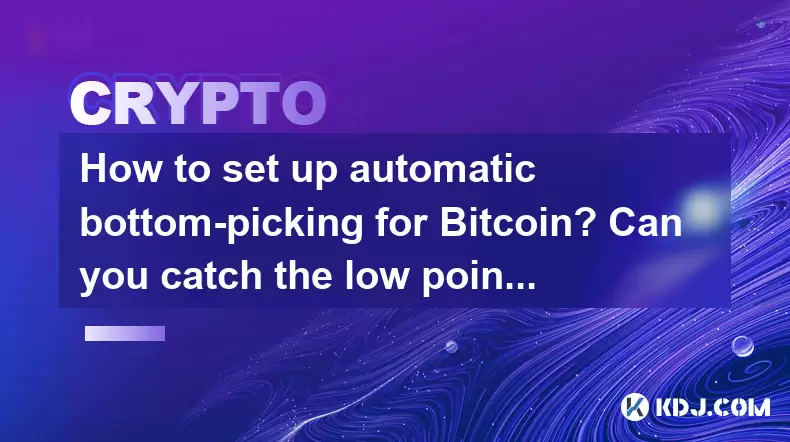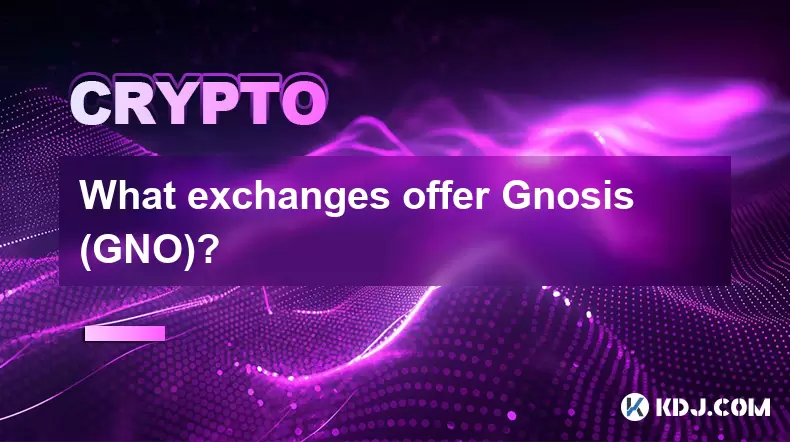-
 Bitcoin
Bitcoin $118600
-2.59% -
 Ethereum
Ethereum $4282
-0.42% -
 XRP
XRP $3.129
-4.21% -
 Tether USDt
Tether USDt $0.0000
0.01% -
 BNB
BNB $805.4
-1.80% -
 Solana
Solana $174.3
-5.77% -
 USDC
USDC $0.9998
-0.01% -
 Dogecoin
Dogecoin $0.2230
-6.33% -
 TRON
TRON $0.3466
1.70% -
 Cardano
Cardano $0.7745
-5.73% -
 Chainlink
Chainlink $21.37
-3.53% -
 Hyperliquid
Hyperliquid $42.93
-7.25% -
 Stellar
Stellar $0.4324
-4.94% -
 Sui
Sui $3.660
-7.17% -
 Bitcoin Cash
Bitcoin Cash $591.6
2.72% -
 Hedera
Hedera $0.2467
-7.04% -
 Ethena USDe
Ethena USDe $1.001
0.00% -
 Avalanche
Avalanche $22.92
-6.14% -
 Litecoin
Litecoin $118.8
-3.79% -
 Toncoin
Toncoin $3.378
-0.46% -
 UNUS SED LEO
UNUS SED LEO $9.011
-1.15% -
 Shiba Inu
Shiba Inu $0.00001294
-5.81% -
 Uniswap
Uniswap $11.24
0.53% -
 Polkadot
Polkadot $3.870
-6.16% -
 Cronos
Cronos $0.1662
-1.68% -
 Dai
Dai $1.000
0.02% -
 Ethena
Ethena $0.7915
-5.62% -
 Bitget Token
Bitget Token $4.414
-1.65% -
 Monero
Monero $259.3
-3.85% -
 Pepe
Pepe $0.00001120
-8.29%
How to set up automatic bottom-picking for Bitcoin? Can you catch the low point?
Use RSI, moving averages, and Bollinger Bands in an automated system to improve chances of buying Bitcoin at low points, though catching the exact bottom is challenging.
May 20, 2025 at 01:07 pm

Setting up an automatic bottom-picking strategy for Bitcoin involves using a combination of technical indicators and automated trading systems to attempt to buy at the lowest points of a price cycle. While it is challenging to consistently catch the exact bottom, a well-designed strategy can improve your chances of buying at favorable prices. This article will guide you through the process of setting up such a strategy, discussing the tools and indicators you might use, and addressing the feasibility of catching the low point.
Understanding Bottom-Picking in Cryptocurrency
Bottom-picking refers to the strategy of buying an asset when its price is at or near its lowest point. In the context of Bitcoin, this means trying to buy when the price is at its lowest before it rebounds. The goal is to maximize potential gains by purchasing at the cheapest possible price. However, accurately predicting the bottom of a price cycle is notoriously difficult, as it involves anticipating market sentiment and external factors that can influence price movements.
Tools and Indicators for Bottom-Picking
To set up an automatic bottom-picking strategy, you'll need to use various technical indicators that can help identify potential low points. Some of the most commonly used indicators include:
- Relative Strength Index (RSI): The RSI measures the speed and change of price movements. An RSI below 30 is typically considered an oversold condition, which might signal a potential bottom.
- Moving Averages: Using a combination of short-term and long-term moving averages can help identify when the price is at a low point. For example, when a short-term moving average crosses above a long-term moving average, it might indicate a potential bottom.
- Bollinger Bands: These bands can help identify when the price is at an extreme low. When the price touches or goes below the lower Bollinger Band, it might be a sign of an oversold condition.
Setting Up an Automated Trading System
To automate your bottom-picking strategy, you'll need to use a trading bot or platform that can execute trades based on your set criteria. Here are the steps to set up such a system:
- Choose a Trading Platform: Select a platform that supports automated trading, such as Binance, Coinbase Pro, or specialized platforms like Cryptohopper or 3Commas.
- Set Up Your Indicators: Configure the indicators you want to use for your strategy. For example, set the RSI to trigger a buy signal when it drops below 30.
- Define Your Entry and Exit Points: Determine the price levels at which you want to buy and sell Bitcoin. For bottom-picking, you might set your entry point just above the recent low to avoid false signals.
- Backtest Your Strategy: Before going live, backtest your strategy using historical data to see how it would have performed in the past. This can help you refine your indicators and entry/exit points.
- Go Live: Once you're satisfied with your backtesting results, activate your strategy on the trading platform. Monitor its performance and make adjustments as needed.
Can You Catch the Low Point?
Catching the exact low point of Bitcoin's price cycle is extremely challenging, if not impossible. The cryptocurrency market is influenced by a wide range of factors, including global economic conditions, regulatory news, and investor sentiment. While technical indicators can help identify potential bottoms, they are not foolproof. It's important to set realistic expectations and understand that your strategy may not always catch the absolute lowest price.
However, by using a combination of indicators and setting up an automated trading system, you can improve your chances of buying at favorable prices. Instead of aiming to catch the exact bottom, focus on buying when the price is low enough to offer a good entry point for potential future gains.
Risk Management in Bottom-Picking
Effective risk management is crucial when implementing a bottom-picking strategy. Here are some tips to manage your risks:
- Use Stop-Loss Orders: Set stop-loss orders to limit potential losses if the price continues to drop after your buy signal.
- Diversify Your Investments: Don't put all your funds into a single strategy. Diversify your investments to spread the risk.
- Monitor and Adjust: Continuously monitor your strategy's performance and be ready to adjust your indicators and entry/exit points based on market conditions.
Implementing Your Bottom-Picking Strategy
Now that you understand the basics of setting up an automatic bottom-picking strategy for Bitcoin, let's go through the detailed steps to implement it:
- Select Your Trading Platform: Choose a platform that supports automated trading and offers the indicators you want to use. For example, if you're using Cryptohopper, sign up for an account and familiarize yourself with the platform.
- Configure Your Indicators: In your chosen platform, set up the indicators you'll use. For instance, if you're using RSI, set it to trigger a buy signal when it falls below 30.
- Set Your Entry and Exit Points: Decide on the price levels at which you want to buy and sell Bitcoin. For example, you might set your entry point at 1% above the recent low to avoid buying at a false bottom.
- Backtest Your Strategy: Use the backtesting feature on your trading platform to test your strategy with historical data. Adjust your indicators and entry/exit points based on the results.
- Activate Your Strategy: Once you're satisfied with your backtesting results, activate your strategy on the trading platform. Keep an eye on its performance and be ready to make adjustments as needed.
Frequently Asked Questions
Q: Can bottom-picking be profitable in the long term?
A: Bottom-picking can be profitable if executed correctly, but it requires a solid strategy and effective risk management. The key is to buy at low points and sell at higher points, but the market's volatility can make this challenging.
Q: How often should I adjust my bottom-picking strategy?
A: You should monitor your strategy's performance regularly and be ready to make adjustments based on market conditions. Depending on the volatility of Bitcoin's price, you might need to adjust your strategy weekly or even daily.
Q: What are the risks of relying solely on technical indicators for bottom-picking?
A: Relying solely on technical indicators can be risky because they do not account for external factors that can influence Bitcoin's price, such as regulatory news or global economic conditions. It's important to use technical indicators as part of a broader strategy that includes fundamental analysis and risk management.
Q: Are there any alternative strategies to bottom-picking for buying Bitcoin?
A: Yes, there are several alternative strategies for buying Bitcoin. These include dollar-cost averaging, where you invest a fixed amount at regular intervals regardless of the price, and trend-following, where you buy when the price is trending upwards. Each strategy has its own advantages and risks, so it's important to choose one that aligns with your investment goals and risk tolerance.
Disclaimer:info@kdj.com
The information provided is not trading advice. kdj.com does not assume any responsibility for any investments made based on the information provided in this article. Cryptocurrencies are highly volatile and it is highly recommended that you invest with caution after thorough research!
If you believe that the content used on this website infringes your copyright, please contact us immediately (info@kdj.com) and we will delete it promptly.
- Dogecoin, Presale, Surge: Riding the Meme Coin Wave
- 2025-08-12 11:10:12
- Dogecoin, Tron, and the ROI Reality Check: What's a Crypto Investor to Do?
- 2025-08-12 11:15:12
- Ethereum Layer-2 Scaling Competition Heats Up as ETH Breaks $4K
- 2025-08-12 10:30:12
- China Regulation, Stablecoins, and BNB Presale: Navigating the Crypto Landscape
- 2025-08-12 11:30:12
- Meme Coins, Investment, and Token Burns: What's Hot in 2025?
- 2025-08-12 10:30:12
- China's National Security Alarm Bells Ring Over Worldcoin's Iris Scans
- 2025-08-12 11:35:12
Related knowledge

How to purchase Aragon (ANT)?
Aug 09,2025 at 11:56pm
Understanding Aragon (ANT) and Its PurposeAragon (ANT) is a decentralized governance token that powers the Aragon Network, a platform built on the Eth...

Where to trade Band Protocol (BAND)?
Aug 10,2025 at 11:36pm
Understanding the Role of Private Keys in Cryptocurrency WalletsIn the world of cryptocurrency, a private key is one of the most critical components o...

What is the most secure way to buy Ocean Protocol (OCEAN)?
Aug 10,2025 at 01:01pm
Understanding Ocean Protocol (OCEAN) and Its EcosystemOcean Protocol (OCEAN) is a decentralized data exchange platform built on blockchain technology,...

Where can I buy UMA (UMA)?
Aug 07,2025 at 06:42pm
Understanding UMA and Its Role in Decentralized FinanceUMA (Universal Market Access) is an Ethereum-based decentralized finance (DeFi) protocol design...

What exchanges offer Gnosis (GNO)?
Aug 12,2025 at 12:42pm
Overview of Gnosis (GNO) and Its Role in the Crypto EcosystemGnosis (GNO) is a decentralized prediction market platform built on the Ethereum blockcha...

How to buy Storj (STORJ) tokens?
Aug 09,2025 at 07:28am
Understanding Storj (STORJ) and Its Role in Decentralized StorageStorj is a decentralized cloud storage platform that leverages blockchain technology ...

How to purchase Aragon (ANT)?
Aug 09,2025 at 11:56pm
Understanding Aragon (ANT) and Its PurposeAragon (ANT) is a decentralized governance token that powers the Aragon Network, a platform built on the Eth...

Where to trade Band Protocol (BAND)?
Aug 10,2025 at 11:36pm
Understanding the Role of Private Keys in Cryptocurrency WalletsIn the world of cryptocurrency, a private key is one of the most critical components o...

What is the most secure way to buy Ocean Protocol (OCEAN)?
Aug 10,2025 at 01:01pm
Understanding Ocean Protocol (OCEAN) and Its EcosystemOcean Protocol (OCEAN) is a decentralized data exchange platform built on blockchain technology,...

Where can I buy UMA (UMA)?
Aug 07,2025 at 06:42pm
Understanding UMA and Its Role in Decentralized FinanceUMA (Universal Market Access) is an Ethereum-based decentralized finance (DeFi) protocol design...

What exchanges offer Gnosis (GNO)?
Aug 12,2025 at 12:42pm
Overview of Gnosis (GNO) and Its Role in the Crypto EcosystemGnosis (GNO) is a decentralized prediction market platform built on the Ethereum blockcha...

How to buy Storj (STORJ) tokens?
Aug 09,2025 at 07:28am
Understanding Storj (STORJ) and Its Role in Decentralized StorageStorj is a decentralized cloud storage platform that leverages blockchain technology ...
See all articles

























































































